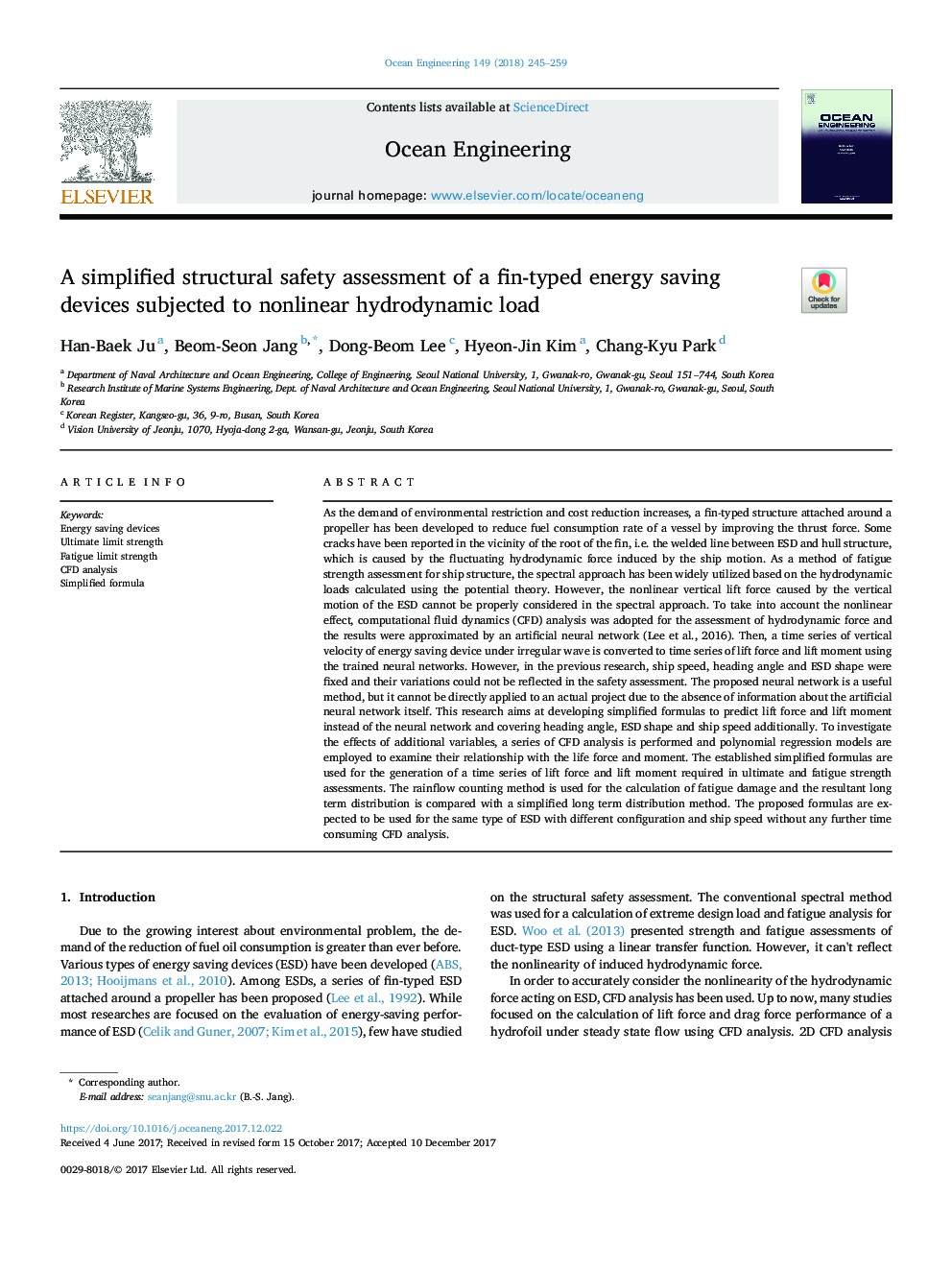| کد مقاله | کد نشریه | سال انتشار | مقاله انگلیسی | نسخه تمام متن |
|---|---|---|---|---|
| 8063506 | 1520641 | 2018 | 15 صفحه PDF | دانلود رایگان |
عنوان انگلیسی مقاله ISI
A simplified structural safety assessment of a fin-typed energy saving devices subjected to nonlinear hydrodynamic load
ترجمه فارسی عنوان
یک ارزیابی ایمنی ساختاری ساده یک دستگاه صرفه جویی در انرژی که تحت فشار بارهای هیدرودینامیکی غیر خطی قرار دارد
دانلود مقاله + سفارش ترجمه
دانلود مقاله ISI انگلیسی
رایگان برای ایرانیان
موضوعات مرتبط
مهندسی و علوم پایه
سایر رشته های مهندسی
مهندسی دریا (اقیانوس)
چکیده انگلیسی
As the demand of environmental restriction and cost reduction increases, a fin-typed structure attached around a propeller has been developed to reduce fuel consumption rate of a vessel by improving the thrust force. Some cracks have been reported in the vicinity of the root of the fin, i.e. the welded line between ESD and hull structure, which is caused by the fluctuating hydrodynamic force induced by the ship motion. As a method of fatigue strength assessment for ship structure, the spectral approach has been widely utilized based on the hydrodynamic loads calculated using the potential theory. However, the nonlinear vertical lift force caused by the vertical motion of the ESD cannot be properly considered in the spectral approach. To take into account the nonlinear effect, computational fluid dynamics (CFD) analysis was adopted for the assessment of hydrodynamic force and the results were approximated by an artificial neural network (Lee et al., 2016). Then, a time series of vertical velocity of energy saving device under irregular wave is converted to time series of lift force and lift moment using the trained neural networks. However, in the previous research, ship speed, heading angle and ESD shape were fixed and their variations could not be reflected in the safety assessment. The proposed neural network is a useful method, but it cannot be directly applied to an actual project due to the absence of information about the artificial neural network itself. This research aims at developing simplified formulas to predict lift force and lift moment instead of the neural network and covering heading angle, ESD shape and ship speed additionally. To investigate the effects of additional variables, a series of CFD analysis is performed and polynomial regression models are employed to examine their relationship with the life force and moment. The established simplified formulas are used for the generation of a time series of lift force and lift moment required in ultimate and fatigue strength assessments. The rainflow counting method is used for the calculation of fatigue damage and the resultant long term distribution is compared with a simplified long term distribution method. The proposed formulas are expected to be used for the same type of ESD with different configuration and ship speed without any further time consuming CFD analysis.
ناشر
Database: Elsevier - ScienceDirect (ساینس دایرکت)
Journal: Ocean Engineering - Volume 149, 1 February 2018, Pages 245-259
Journal: Ocean Engineering - Volume 149, 1 February 2018, Pages 245-259
نویسندگان
Han-Baek Ju, Beom-Seon Jang, Dong-Beom Lee, Hyeon-Jin Kim, Chang-Kyu Park,
